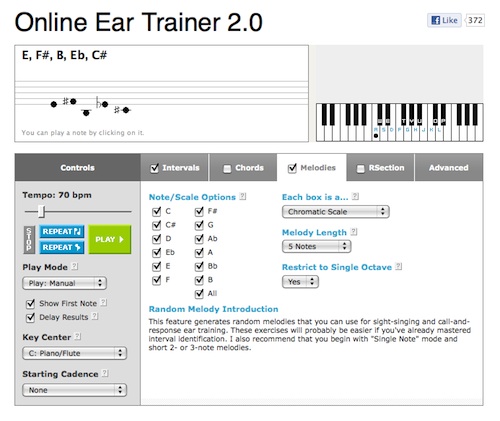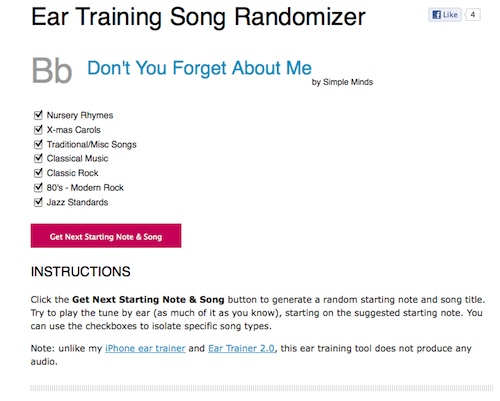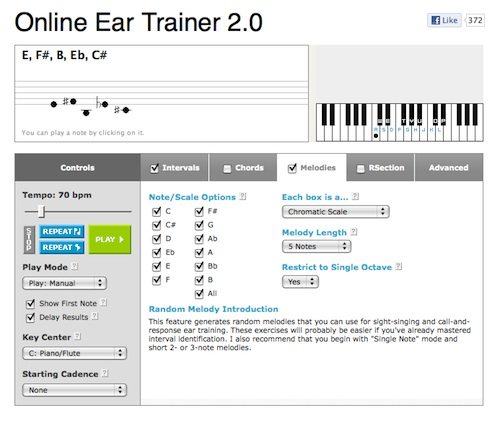IWasDoingAllRight.com offers online ear training apps. Unlike some of the other ear training app sites featured in this series though, the site has far more to offer than just these programs. We’ll do another article in future dedicated to the site’s jazz blog but for now we’ll focus on the elements of the site made for ear training.

How to Use It
There are actually a couple different apps on this site for ear training.
The first is a program that will play any interval or chord for you, with adjustable options but, notably, without the “quiz” function often seen in similar apps. But it has a more hands-on advantage: it randomly generates intervals, chords, or even melodies on a staff. This is incredibly useful for sight-reading, a skill that usually doesn’t get as much attention from ear training programs like these. It’s also available on iPhone and Android devices.

IWasDoingAllRight.com’s Online Ear Trainer lets you challenge your ‘playing by ear’ and sight-reading skills
The second requires more direct engagement than most of the online alternatives, but I’ve found it—and the method I picked up from using it—to be one of the most useful resources for ear training around. It randomly generates a well-known melody and a starting pitch, and you must then play that melody, in that key, on your instrument. It’s a pretty simple concept, but it’s an unbeatable way to start applying fundamental ear training practice to your functional ability as a musician.

The “Song Randomizer” from IWasDoingAllRight.com challenges you to play back a well-known tune from a given starting pitch

What You’ll Learn
This site’s ear training resources aren’t the kind you normally find. They’re not self-contained games, which means you can’t get much out of it if you’re just sitting at your computer without your instrument. Sitting at the computer with your instrument can be a very effective approach, but probably also means it’s not the best choice for beginners.
You’ll get the most out of this site if you’ve already got an adequate grip on basic diatonic intervals and harmonies, and you’re ready for a bit more of a challenge.
That said, this site could help you really propel your ear training techniques into the next stage. Methods like sight-singing and melody transcription are just slightly more complicated versions of interval identifications, but this is the phase where it actually starts to sound musical. And you can use what you learn here as a springboard into all kinds of other practices, like improvisation, arrangement, songwriting, etc.
Suggestions
This could sound obvious, but the best advice at this stage is to stick with it and don’t get frustrated!
Undoubtedly, if you’ve never tried to play a well-known melody on your instrument, the first couple of weeks will involve a lot of fumbling around… The same is true for sight-reading: even if a melody looks simple, it can be frustrating if you expect perfection on your first attempt.
In both cases, analyze your mistakes afterwards. You’ll start to notice intervals that stand out. Once you’ve identified one of these problem points all you have to do is spend a little more time focused on that interval in one of the more basic interval-repetition apps and it’ll all get a little easier…one interval at a time.
Summary
If you’ve got a little bit of experience with ear training and you’re ready to apply it in some less repetitive ways, this site’s resources are likely to be exactly what you’re looking for!







